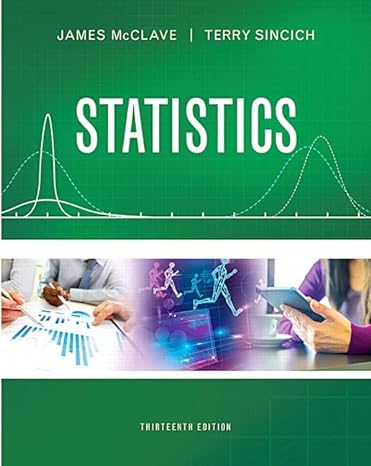Forensic analysis of JFK assassination bullets. Following the assassination of President John F. Kennedy (JFK) in 1963,
Question:
Forensic analysis of JFK assassination bullets. Following the assassination of President John F. Kennedy (JFK)
in 1963, the House Select Committee on Assassinations
(HSCA) conducted an official government investigation.
The HSCA concluded that although there was a probable conspiracy, involving at least one additional shooter other than Lee Harvey Oswald, the additional shooter missed all limousine occupants. A recent analysis of assassination bullet fragments, reported in the Annals of Applied Statistics (Vol. 1, 2007), contradicted these findings, concluding that evidence used to rule out a second assassin by the HSCA is fundamentally flawed.
It is well documented that at least two different bullets were the source of bullet fragments used in the assassination.
Let E = 5bullet evidence used by the HSCA6, T = 5two bullets used in the assassination6, and TC
=
5more than two bullets used in the assassination6. Given the evidence (E), which is more likely to have occurred—
two bullets used (T) or more than two bullets used (TC )?
a. The researchers demonstrated that the ratio, P1T0E2/P1TC 0E2, is less than 1. Explain why this result supports the theory of more than two bullets used in the assassination of JFK.
b. To obtain the result in part
a, the researchers first showed that P1T0E2>P1TC 0E2 = [P1E0 T2 # P1T2]>[P1E0 TC2 # P1TC2]
Demonstrate this equality using Bayes’s theorem.
Step by Step Answer:

Statistics Plus New Mylab Statistics With Pearson Etext Access Card Package
ISBN: 978-0134090436
13th Edition
Authors: James Mcclave ,Terry Sincich





